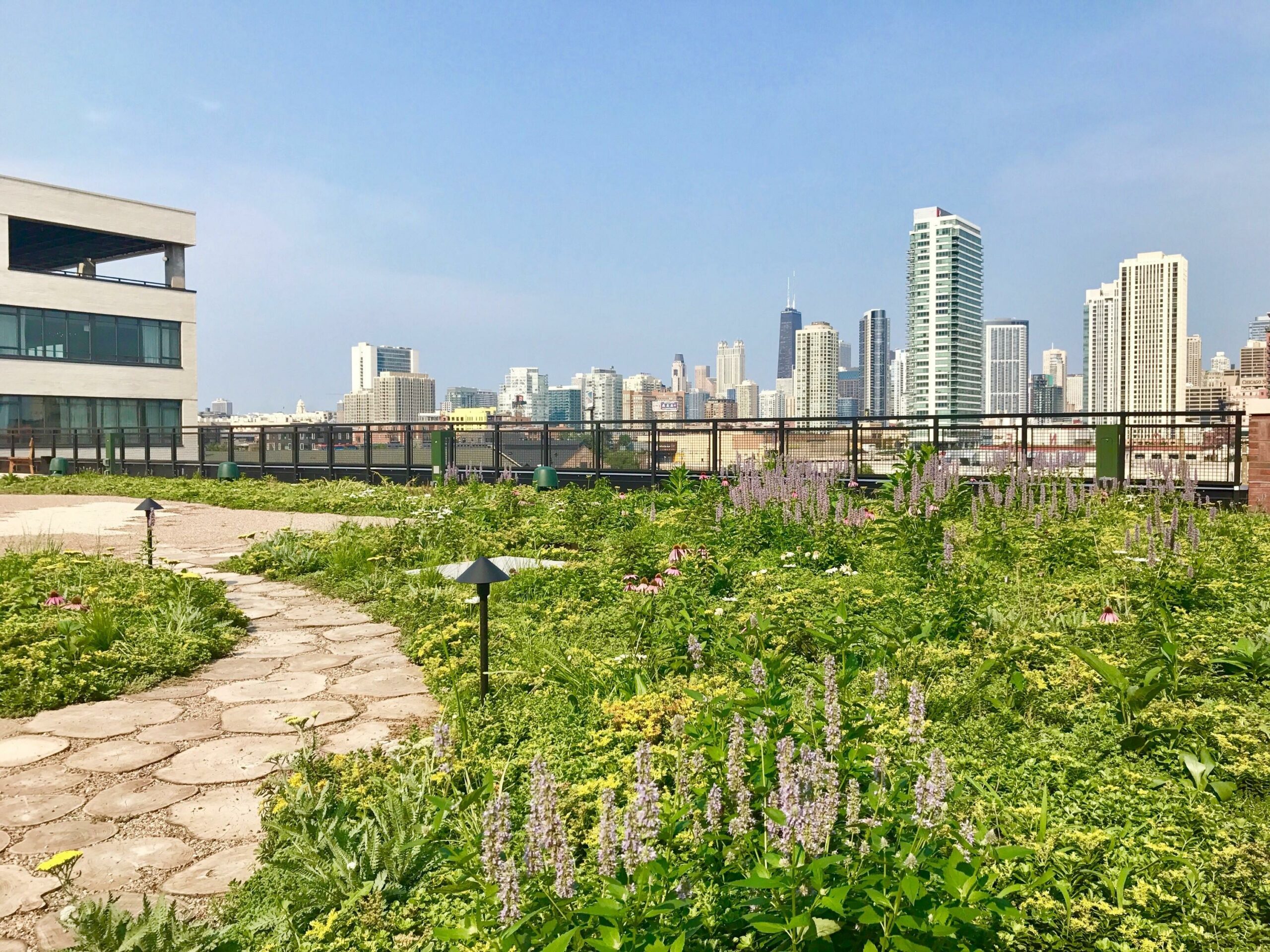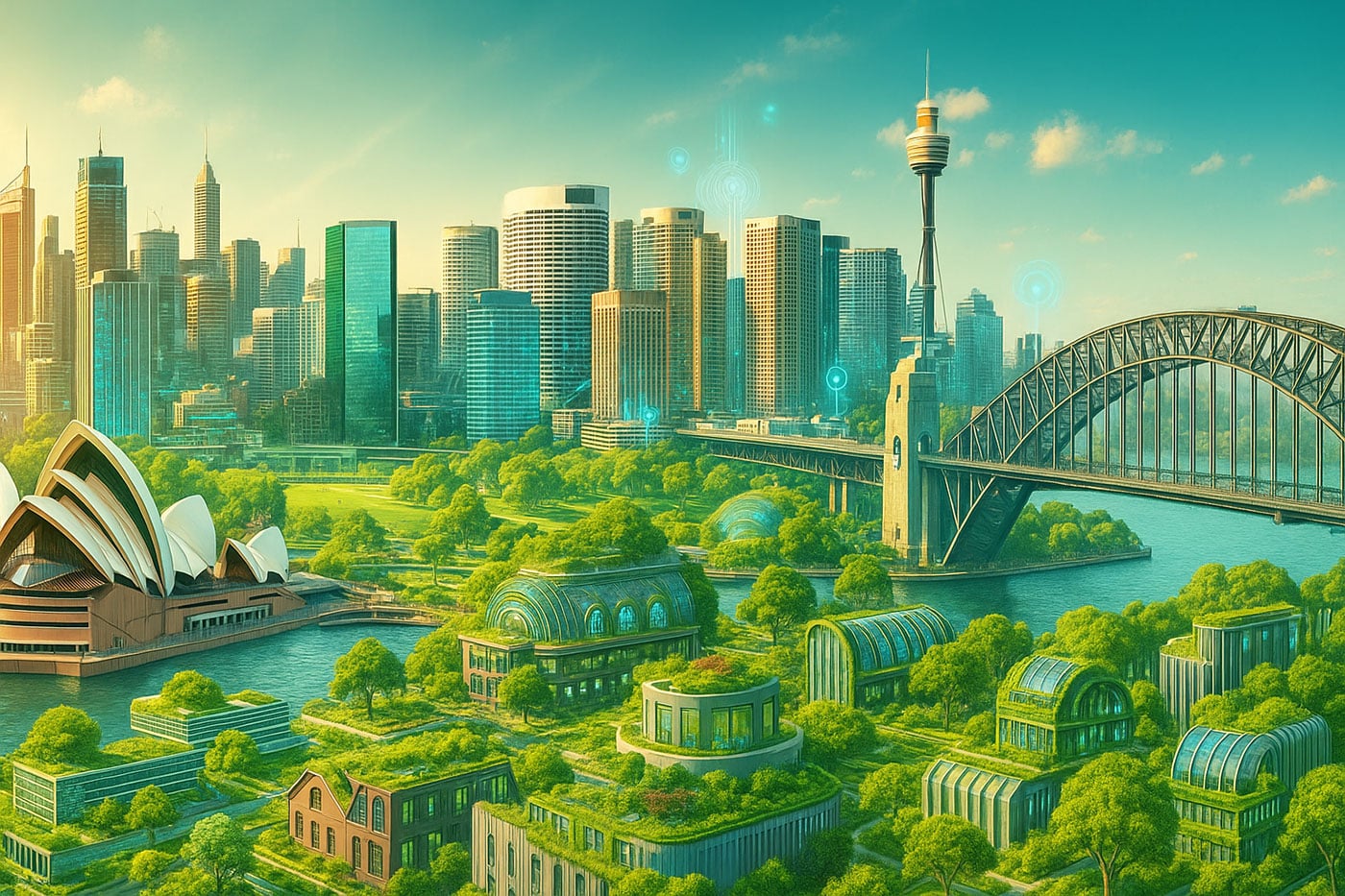7 benefits of green roofs
Building roof areas represent, on average, around 30% of a city area. Filling this ‘useless’ space with green roofs or rooftop gardens will present cities with several attractive and crucial benefits.
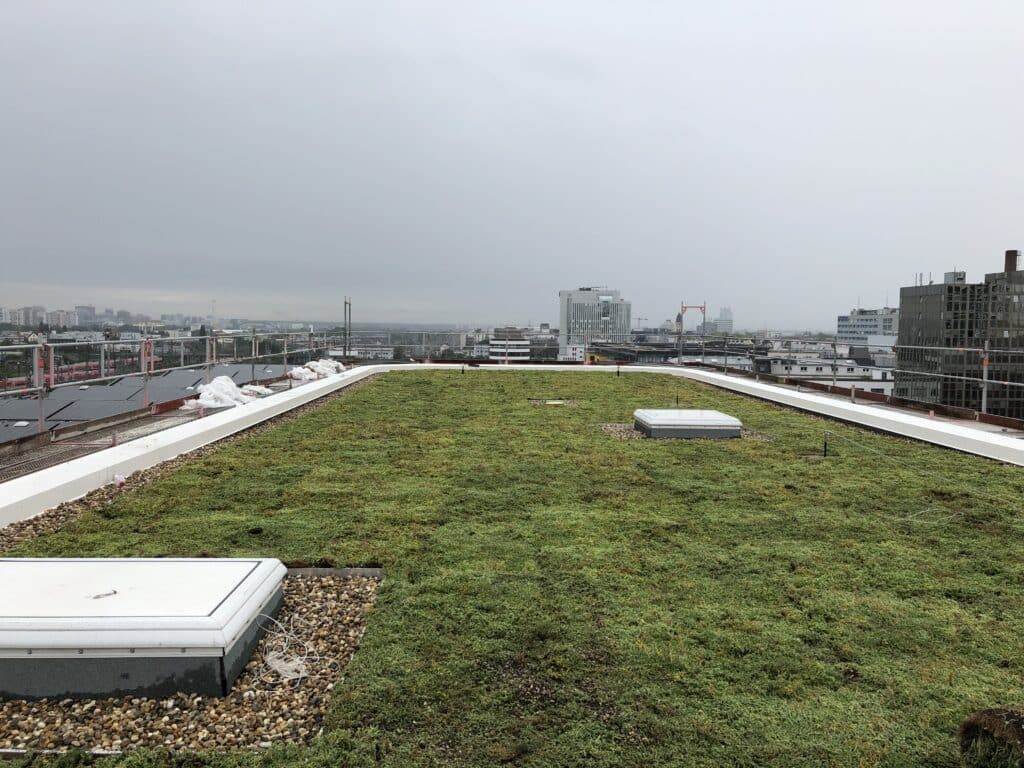
1. reduction of greenhouse gas emissions
Australia has one of the highest per capita emissions of carbon dioxide in the world. Secondly, greenhouse gas (GHG) emissions from buildings currently contribute 40% of global emissions. It is crucial to reduce greenhouse gas emissions as quickly as possible.
Thankfully the roof space in urban areas can be put to good use to help combat GHG emissions with this simple solution: by installing pregrown vegetation blankets or trays on it. Plants absorb CO2 and release oxygen into the atmosphere. The more living roofs you install in your city, the more CO2 will be absorbed.
2. Combating Heat Waves and urban heat island effect
As you may know, CO2 traps heat in the atmosphere. Too much heat can be dangerous, even lethal: According to the National Climate Change Adaptation Research Facility at Griffith University, “extreme heat events, or heatwaves, have killed more Australians in the past 200 years than any other climate hazard” and research the facility produced with Monash University found that “a number of studies have shown a greater impact of extreme heat on mortality in urban areas than surrounding regions”. In addition, cities like Melbourne have been experiencing more frequent heat waves for the last two decades.
The Urban Heat Island Efect
Another well-documented phenomenon is the Urban Heating Island Effect (UHI): urban areas get hotter than their surrounding countryside. For example, in the summers of 2015 and 2016, temperatures in parts of Sydney varied by as much as five degrees Celsius from official observations. In the meantime a peak variation of seven degrees Celsius has been recorded in Melbourne.
The UHI-effect is especially visible at night, when heat absorbed by dark surfaces, such as concrete and asphalt, during the day radiates back into the atmosphere. This preventing the city from cooling down at night. Not only is this uncomfortable to the inhabitants, it also means that there will be a need for more air conditioning, which costs more energy, which means more carbon emissions.
Plants absorb CO2 and sunlight, which is crucial to regulate the urban climate and control heat waves. According to this study on the role of roof greening in mitigating Urban Heat Island effects in the metropolitan area of Adelaide:
“The results showed that [the green roofs] have significant cooling effects in summer time and could behave as an insulation layer to keep buildings warmer in the winter.”
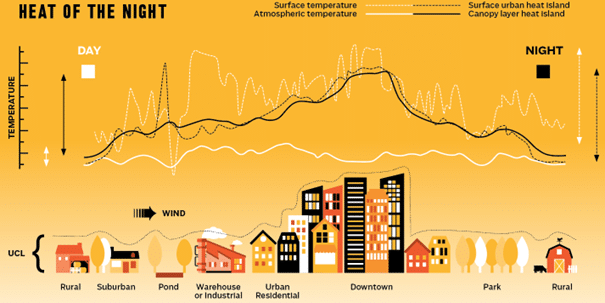
3. Improving health and well-being
The latter meaning that green roofs work as an insulant, providing a more temperate atmosphere inside buildings. Which takes us to the next benefit: the improvement of health and well-being of the people living and working under or near green roofs.
International studies have shown that the physical, emotional and performance benefits increase in a proximity to plants. For example, there are less sick days and their emotional stability is improved. Also, concentration levels are 15% higher per day. For example, just taking a short break while looking at a green roof for 40 seconds can already improve the concentration of employees. Another health benefit is the reduction in air pollution.
4. Encouraging biodiversity
What’s good for humans is in this case also good for animals. Green roofs contribute to the biodiversity of an area. Where concrete buildings and busy roads don’t leave much space for other species to thrive, green roofs do. They can be an ideal habitat for insects and birds, and if the green roofs of multiple buildings are close enough together they turn into an insect highway, providing bees, butterflies and others with a way to get around the city and improving the biodiversity even more.
Bees and butterflies play a vital role in food production and biodiversity, and more than 80% of all plants eaten by human beings all over the world depend on pollination by bees for their survival.
5. Stormwater management
Green roofs can also help with stormwater management. Because of climate change, Australia doesn’t only see more heatwaves, but also excessive rain, coming down in short but violent bursts, causing drains to fill up too fast. In these situations, green roofs can act as a water buffer and help with stormwater runoff from buildings and decrease flash flooding.
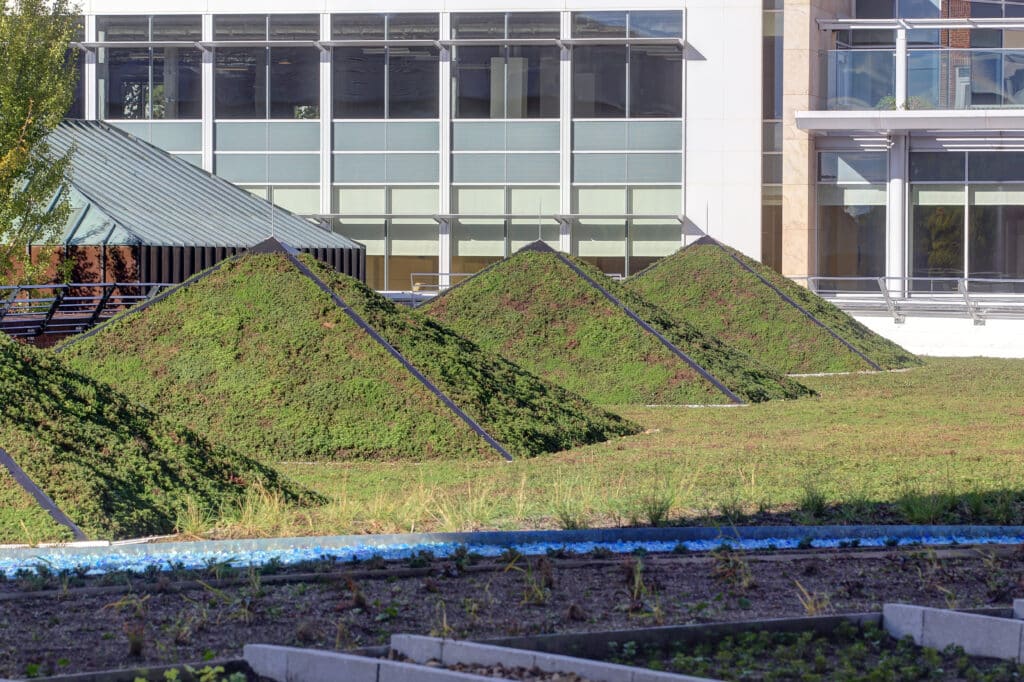


6. Energy conservation
Cooling Degree Days in Western Sydney are about three times higher than in the Eastern coastal zone. This means that Western Sydney needs three times the amount of energy to cool buildings than the Eastern coastal zone. According to European information living roofs can make buildings up to 4⁰ Celsius cooler and save up to 7% electricity in summer. As air-conditioning use in Australia is much higher, we think more electricity can be saved in places like Western Sydney.
7. Economic benefits
The total economic cost to the community due to hot weather is estimated to be approximately $1.8 billion in present value terms. Approximately one-third of these impacts are due to heatwaves. Of the total heat impact, the Urban Heat Island effect contributes approximately $300 million in present value terms. Greenery in general provides a relatively cheap and effective way to cool urban environments. Additionally, green roofs ad 4-8% to the value of the property, as there is a high demand for urban green space and nature. Moreover, “greenifying” can be a good marketing strategy for cities – like “Garden City” Singapore, and of course also for companies. It’s a great way to attract investment, visitors and commerce.
How to start?
Now that you are aware of the benefits of green roofs in Australia, you may wonder how to make a start with, for example, installing or implementing green roofs in your planning. Global market leader Sempergreen has the knowledge and expertise to help you with all your green roof questions. But before that, let us highlight a number of benefits of Sempergreen green roof systems.
Benefits of Sempergreen green roof systems
- Easy installation of the pre-grown vegetation blankets and trays
- Low maintenance
- Suitable for all surfaces sizes from shed roofs to roofs of industrial buildings and large appartment complexes
- Beautiful all year round and sprakling colours during blooming season
- Various plant mixtures, for example Wildflower and Sedum roofs
- Can be used on new building designs and can be retrofitted to existing structures
Get your own green roof
Would you like to learn more about Sempergreen green roof systems? Get in touch with us today to discuss your project with us and to receive a free offer. Our representative has the expertise and equipment to realise projects of any size across Victoria, Australian Capital Territory and South East Wales.
